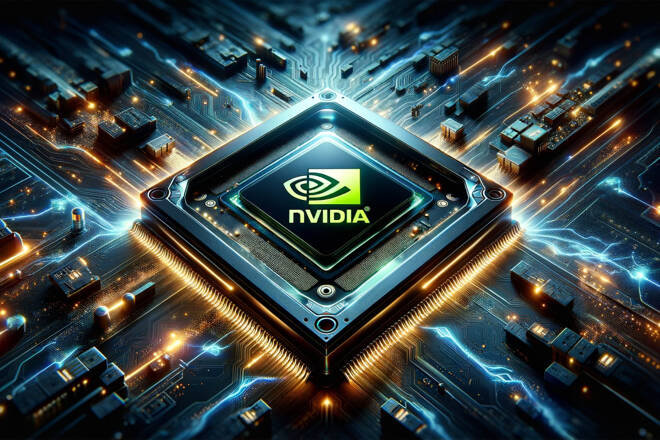Advertisement
Advertisement
Nasdaq Traders Brace for Volatility as Nvidia’s Q4 Guidance Signals Supply Constraints
By:
Key Points:
- Nvidia Q3 revenue surged 94% to $35B, with AI chip demand driving data center revenue up 112% to a record $30.8B.
- Supply constraints for Nvidia’s Blackwell AI chips could last into 2026, limiting near-term growth despite robust demand.
- Nvidia’s Q4 guidance disappointed, with a $37.5B revenue target narrowly exceeding analyst estimates of $37.1B.
- Options traders expect Nvidia stock volatility, with potential 9% moves equating to $310B in market cap shifts.
- Nvidia’s market impact extends to major indices, influencing tech-heavy benchmarks like the S&P 500 and Nasdaq 100.
Why Did Nvidia’s Stock Drop After Strong Earnings?
Nvidia (NVDA) delivered a stellar third-quarter earnings report, highlighting its dominance in the AI chip market. Adjusted earnings came in at $0.81 per share, beating Wall Street’s estimate of $0.75. Revenue surged 94% year-over-year to $35.08 billion, exceeding analysts’ expectations of $31.3 billion. Data center revenue, the backbone of Nvidia’s AI business, jumped 112% to $30.8 billion.
Despite these robust results, Nvidia shares fell 1.7% in after-hours trading. The decline was attributed to its fourth-quarter revenue forecast of $37.5 billion, which narrowly exceeded the $37.1 billion consensus estimate. This cautious guidance dampened investor enthusiasm, particularly in light of ongoing supply chain challenges for Nvidia’s new Blackwell AI chip.
How Are Supply Constraints Affecting Nvidia’s Outlook?
Nvidia CFO Colette Kress noted that while Blackwell shipments are set to begin this quarter, the company anticipates supply constraints to persist into fiscal 2026. The overwhelming demand for Blackwell and Hopper chips, which power AI applications, highlights Nvidia’s market leadership but also underscores its production limitations.
CEO Jensen Huang emphasized that demand remains “staggering,” driven by a global AI boom across industries. While Nvidia is working to scale production, these constraints could limit near-term growth opportunities, even as the company solidifies its position as a cornerstone of the AI revolution.
What Does This Mean for Options Traders?
Options traders are bracing for heightened volatility, with implied moves suggesting potential price swings of 9% in either direction following the earnings release. With a $3.5 trillion market cap, this could translate into $310 billion of value added or lost. Given Nvidia’s weight in the S&P 500 and Nasdaq 100, any significant price movement will likely impact broader market benchmarks, amplifying volatility across the tech sector.
How Will This Impact Broader Market Sentiment?
Nvidia’s Q3 performance reinforces its dominance in the AI market but raises concerns about its ability to meet explosive demand. Investor sentiment toward Nvidia often spills into the broader tech sector, making its guidance a key signal for other AI and semiconductor stocks. Short-term uncertainty around supply constraints could weigh on the stock, but the broader demand story remains intact, supporting a positive long-term outlook.
Market Forecast: A Balanced View
- Short-Term Outlook: Bearish, as supply constraints and cautious guidance weigh on near-term sentiment.
- Long-Term Outlook: Bullish, driven by Nvidia’s unmatched leadership in the AI chip market and sustained demand for its products.
Traders should watch Nvidia’s supply chain developments closely, as they will likely influence stock momentum in the months ahead.
About the Author
James Hyerczykauthor
James Hyerczyk is a U.S. based seasoned technical analyst and educator with over 40 years of experience in market analysis and trading, specializing in chart patterns and price movement. He is the author of two books on technical analysis and has a background in both futures and stock markets.
Did you find this article useful?
Latest news and analysis
Advertisement
